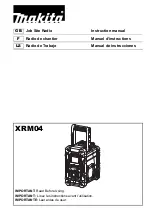
3.1 Selecting a location
Warning: Potential ignition source
This product is NOT approved for use in hazardous/flammable atmospheres. Do
NOT install in a hazardous/flammable atmosphere (such as in an engine room
or near fuel tanks).
General location requirements
When selecting a location for the unit it is important to consider a number of factors.
To ensure optimum performance, it is recommended that the display is temporarily powered up and
tested, at the chosen location, prior to installation.
Ventilation requirements
To provide adequate airflow:
• Ensure that equipment is mounted in a compartment of suitable size.
• Ensure that ventilation holes are not obstructed.
• Ensure adequate separation of equipment.
Mounting surface requirements
When selecting a mounting surface ensure:
• the product will be adequately supported on a secure, flat surface. Do NOT mount units or cut
holes in places which may damage the structure of the vessel.
• sufficient space is available around the product.
• there is nothing behind the mounting surface that may be damaged when drilling.
Cable routing requirements
Ensure you have identified the route that all required cables will take and that sufficient space is
available to allow connection of cables:
• Unless otherwise stated, a minimum cable bend radius of 100 mm (3.94 in) is required.
• Where necessary, cable supports should be used to prevent stress on connectors.
Electrical interference
Select a location that is far enough away from equipment that may cause interference, such as
motors, generators and radio transmitters/receivers.
Power supply
Select a location that is as close as possible to the vessel’s DC power supply. This will help to
keep cable runs to a minimum.
RF interference
Certain third-party external electrical equipment can cause Radio Frequency (RF) interference with
GNSS (GPS), AIS or VHF devices, if the external equipment is not adequately insulated and emits
excessive levels of electromagnetic interference (EMI).
Some common examples of such external equipment include LED lighting (e.g.: navigation lights,
searchlights and floodlights, interior and exterior lights) and terrestrial TV tuners.
To minimize interference from such equipment:
• Keep it as far away from GNSS (GPS), AIS or VHF products and their antennas as possible.
• Ensure that any power cables for external equipment are not entangled with the power or data
cables for these devices.
• Consider fitting one or more high frequency suppression ferrites to the EMI-emitting device. The
ferrite(s) should be rated to be effective in the range 100 MHz to 2.5 GHz, and should be fitted
to the power cable and any other cables exiting the EMI-emitting device, as close as possible to
the position where the cable exits the device.
30
Содержание RAY91 VHF
Страница 2: ......
Страница 4: ......
Страница 12: ...12...
Страница 62: ...62...
Страница 82: ...82...
Страница 90: ...90...
Страница 114: ...114...
Страница 115: ...Chapter 10 Maintenance Chapter contents 10 1 Maintenance on page 116 Maintenance 115...
Страница 161: ......
Страница 162: ......
Страница 166: ......
Страница 167: ......
















































